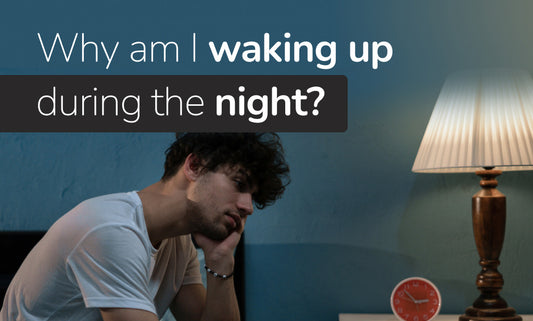
Harvard Health states that blue light may be an issue. Therefore its a good idea to look at ways to manage high energy visible blue light. One way to do this is with Blue Light Glasses.
There are a lot of misconceptions on when to wear blue light blocking glasses and what kind of glasses to wear when. Therefore I wanted to explain the three kinds of blue light glasses you can buy along with their optimal application.
Before we delve into the science and rationale I would like to set three definitions that we will refer to throughout this article.
These definitions should be used when referring to specific blue light glasses outside this article to avoid confusion.
These are as follows:
- Blue Blockers – glasses that effectively block 100% blue light from passing through the lens (400-495nm)
- Blue/Green Blockers – glasses that effectively block all blue light and some green light from passing through the lens (400-550nm)
- Blue Reducers – glasses that effectively reduce specific wavelengths of light across the blue spectrum of between 400-495nm
When it comes to blue light glasses there are typically three colours to choose from:
- Yellow tinted lens (or clear with a slight yellow tint)
- Amber tinted lenses
- Red lenses
Application of blue light glasses can be as follows:
- Daytime use when exposed to excessive artificial light
- Evening use
- Therapeutic/medical use
Now that we have outlined the types and applications of blue light glasses we can now delve into that what, how and why.
Day Time Use
In order to entrain your body clock one needs to be outside and allow the first light to hit your eyes be from sunlight, ideally as the sun is rising. The spectrum of light emitted at this specific time of the day allows your body clock to be entrained and set the conditions required later in the day for optimal Melatonin secretion (sleep hormone) and for cortisol to gradually reduce throughout your biological day.
Blue and green light can be classified as short wavelength high energy concentrated light. This means that when this light hit your eyes messages are sent to your suprachiasmatic nucleus (SCN) which informs the body it is your awake period, raising Cortisol and making you feel awake, full of energy and ready to tackle the day.
Therefore it can be concluded that blue and green light from a full spectrum source such as the sun is essential for circadian entrainment, proper sleep (during the darkness hours) and alertness during the day.
Blue and green light is essential to human health, when administered from the correct natural source (the sun) and when received during day light hours. Without this our body clocks would not be entrained optimally and our sleep and health would suffer.
So, if blue and green light during the day is essential then why do we need to consider blue light glasses? Well, the answer would be if you are under intense artificial lighting during your biological day. This could be working in an office staring at a computer screen all day, working in a hospital under intense fluorescent light, or basically being addicted to scrolling through your smart phone whilst in doors. All no good for mitochondrial health, wellbeing and your body clock.
The issue with LED and fluorescent lighting isn’t so much the blue frequencies but the intensity of specific frequencies within the blue spectrum that your retina is exposed to. It appears that the area of concern is the 450nm wavelength in the blue spectrum as the intensity far exceeds the capability of the human eye to manage.
Some balanced blue is great during the day, excessive high intensity artificial blue may give you migraines, headaches, dry eyes and phase shift your circadian rhythms. The blue light from the sun is balanced with the red and orange spectrum which are restorative frequencies of light, LED lights and back lit digital devices do not have these restorative light frequencies present.
This is where a good blue reducer will come in. We do not need to block blue and green post 450nm as these are not the wavelengths causing the issues.
The issue is caused by the aggressive spike at 450nm. A good blue reducer for day time use will tackle the problem areas of the blue spectrum and block most blue at 450nm and below. Zero blue during the day is not good so make sure you get outside in the morning and on your lunch break to counter this.
Light at the 450nm point is damaging to the retinas as this wavelength penetrates the eye all the way to the back of the retina, unlike the other wavelength in the blue/green spectrum. Post 450nm during the day is beneficial to the eyes as it provides protection to the eyes and helps cognitive and memory functions. It has also been shown to stimulate the retinal ganglion cells which are photosensitive, stimulates papillary reflexes and controls your body clocks.
Lenses with clear (slight yellow tint) or yellow lenses are best for daytime use as they specifically target the 450nm and below spectrum of blue leaving the other beneficial wavelengths alone. Orange, amber or red lenses during the day will be potentially damaging to your health and body clocks so it’s advisable to steer clear of these lens colours during the daylight hours.
When choosing your daytime blue reducers make sure you ask what wavelengths of blue light are reduced, if the highest areas are not in the 450nm or below banding then they will not be as effective as ones that do target reduce these wavelengths. Also, make sure the frequencies above 450 are left alone to ensure optimisation during your day time use.
It is also worth noting if you work outside then daytime blue reducers are unnecessary and best or detrimental to your health at worst , but most of us will be exposed to artificial LED blue spikes at 450nm at some point during our digitalised day.
BON CHARGE's range of blue reducers block exactly the frequencies that spike in LED digital technology and fluorescent lights. We offer clear computer glasses that help reduce the nasty spike in blue light and a day time blue blocker which blocks all blue light between 400-455nm, leaving blue light between 456-495 in tack for optimal health and wellness.
Evening Use
Blue Blockers
The most common use of blue blockers would be during the biological night time, post sunset up until bed time. The amount of people I see on social media posting selfies wearing clear lens blue reducers and quoting them for evening use upsets me. They are lead to believe that these types of lenses will block blue light; some even claim they can block over 90% of blue light which as a matter of fact is impossible. The below colour chart will dispel that lie once and for all, check out the opposing colours on what each colour blocks.

Studies have shown that blue light between 400-495nm suppresses melatonin and causes phase shifting in circadian rhythms when it passes through the retina after dark.
Darkness is a creation of nature, a period of a biological 24 hours. Darkness plays a role in hormonal regulation. During the hours of darkness we should only be exposed to low energy and long wavelength light, typically in the orange and red spectrums (550nm+). The wavelengths above 550nm do not have a significant effect on melatonin production.
Without proper melatonin production our sleep and consequently our health is impacted.
We need to ensure that if we are exposed to LED lighting after dark we protect our eyes across not only the 450nm spike of blue but the entire blue spectrum.
Some blue light blockers on the market only block blue light to 480nm which renders them a useless health tool. These blue blockers should be approached with caution as they still allow blue light in and as we have shown the entire blue spectrum suppresses melatonin secretion which impacts sleep and circadian rhythms.
However....
Blue/Green Blockers
It has been shown that frequencies as high as 550nm can also suppress melatonin. The front end of the green spectrum can still be classified as high energy and short wavelength light. As we know, short wavelength and high energy light impacts melatonin production and sleep. Therefore we may have to block some green for optimal circadian health.
Blue/Green Blockers are characterised by a red lens typically built up through layering from orange-amber-red to allow for complete blocking from 400-550nm, making them the most optimal blue/green blockers based on the available science.
Someone who would benefit from blue/green blockers would be anyone who is exposed to artificial light after dark. Basically everyone!
Another application will be for people who struggle to get to sleep. When experimenting with blue and blue/green blockers I fell asleep much quicker with the red lens glasses over amber lenses and had much better quality sleep.
Further to the above it appears that anyone would find huge benefits using BON CHARGE Blue Light Blocking Glasses range.

Finally, someone looking for “optimal” based on the current science would prefer BON CHARGE blue/green blockers. Based on the available science they are the most optimal blue and green light blocking lens on the market. Amber lens glasses are old news and wont help you achieve optimal sleep and optimal health and wellness.
These glasses should only every been worn during your biological night, 2-5 hours before bed or longer if staying up late, however I guarantee you will struggle to stay awake for long wearing our blue light glasses.
Summary
So, there we have it, an overview of what, when and how on all 3 blue light glasses currently available from BON CHARGE. Make sure you are wearing the right blue blockers and live your best life!
References
- https://pubmed.ncbi.nlm.nih.gov/109869/
- https://pubmed.ncbi.nlm.nih.gov/2247961/
- https://pubmed.ncbi.nlm.nih.gov/1541341/
- https://gunnar.com/lens-technology/#bluelightsection
- https://www.blublox.com/blogs/news/what-colors-of-artificial-light-affect-sleep
- https://stm.sciencemag.org/content/2/31/31ra33
- https://pubmed.ncbi.nlm.nih.gov/11763987/




